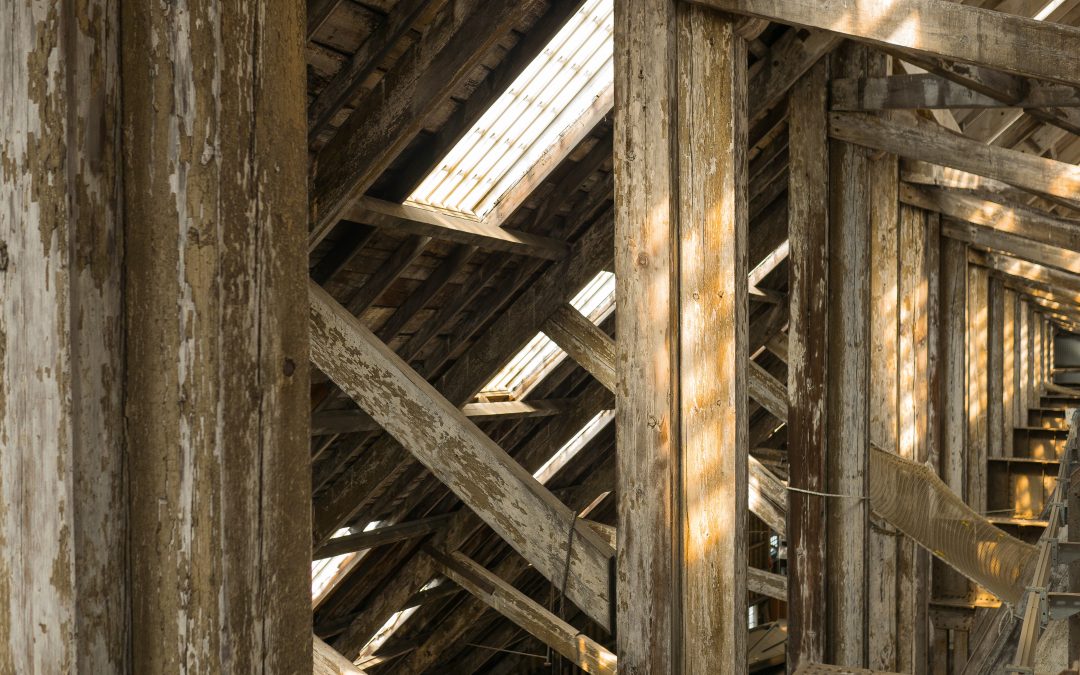Your attic: it’s a place you hardly go, where – if you can even get to it – you store all of the kids’ old clothes, your old textbooks, and that Nordictrack you never used. Most people find it’s best to avoid the attic at all costs because it’s a sort of unmagical Narnia that sucks things in, and never seems to let them go. But what most people don’t realize is that their attic is actually a very structurally important part of the home, which exists for more than just holding all of your unwanted, forgotten possessions. In fact, the state of your attic’s ventilation and insulation can mean the difference between you replacing your roof today or 10 years down the road. That’s right, it’s time to talk attic, and more specifically, attic ventilation. In this blog, we’ll tell you everything you need to know about attic ventilation, including what it is, what it does for your home, and how to tell if you have it or if you need it. Let’s start at square one:
What is attic ventilation?
Attic ventilation is a series of vents within your roofing system that increases airflow within your attic. Most new homes today automatically come with the proper number of vents to suit the size of the new home, and the size of the roof, but older homes may need vents added, or some may use attic fans as a temporary solution for a lack of ventilation.
Why do you need attic ventilation?
In Michigan, attic ventilation is the most important in the winter time. We talk about ice dams a lot in our blog, and that’s because they are such a major threat to your home. Proper attic ventilation is the number one way to prevent ice dams from even forming. If your attic is improperly ventilated, heat that’s trapped in your attic in the winter can cause snow gathering on your roof to melt. As the melted snow slides down the side of your roof, it refreezes when it gets to the outer edges, near your gutters, where there’s no heat under the roof. If the melting is allowed to continue, the ice patches on the edge of your roof will get bigger and bigger, building up on your gutters and sides of your roof, causing serious, irreparable water damage that can be expensive to replace.
We’ve got some suggestions to combat ice dams if they start to form, but the best way to avoid them is to ensure your attic is properly ventilated when you build your home or put in a new roof.
While proper attic ventilation is probably most noticeably necessary in the winter, it keeps your home safe in the summer as well. In the summer, heat absorbed by the roof can get trapped in your attic, and as Michigan is notoriously humid, all that hot, wet, air rises into the sub-roofing and rafters of your home. Without ventilation, all that humidity is trapped and can cause mold and rot that will eat away at the structure of your roof. With ventilation, that hot air has somewhere to escape, and your attic is kept mold and rot free.
Don’t get caught in a myth
Some people worry that by putting vents in their roofs, they’ll be letting conditioned air escape, decreasing their energy efficiency and costing them extra money. This couldn’t be further from the truth. Attic ventilation is the only way to keep your roof safe in both the winter and the summer, as it helps regulate the temperature within your attic. The only way attic ventilation systems would allow for conditioned air to escape out your roof is if your attic itself is poorly insulated. At this point, the ventilation is still not to blame, as it is the poor insulation that is allowing your cooled or heated air to escape in the first place. Know that roof vents are meant to regulate only the air and temperature within your attic, not the rest of your home.
The 1:300 Rule
As a general rule, your roof should have 1 square foot of ventilation for every 300 square feet of ceiling. Now, what type of ventilation you choose is up to you and your roofer, but know that there are a few different types of attic vents. Some have moving parts that force the air in your attic to circulate, and others do not, relying on the power of convection to push hot air up and out of the vents, and let cool air drop down. The type of vent you choose will depend on your home, the style of your roof, and how much heat your roof absorbs, so it’s best to talk to your roofer individually about what type of roof vents are best for you.
How do you know your attic is properly ventilated?
Well, if you begin to see ice dams forming on your roof, or if you see evidence of water damage, mold, or rot in your attic, chances are you have an issue. Before you assume it’s the ventilation, however, be sure to check your insulation. A poorly insulated attic floor can lead to a lot of the same issues, and it’s often easier to simply add a bit more insulation than it is to add extra attic vents. Additionally, if it’s insulation that’s the problem, and you add attic vents first, then you’ll essentially be wasting money as your heat or air conditioning literally goes through the roof.
So, if you’re having problems, first check your insulation. A home building professional or roofer should be able to tell you if the insulation below your attic is doing its job. If you need to add more insulation, it’s easy to do with simple rolls of fiberglass insulation. If insulation isn’t the issue, ask your roofer about ventilation.
When you have proper roof ventilation and attic insulation, you should have no problems with pesky problems like ice dams or roof rot. If you suspect an issue with your attic ventilation, give the experts at Werners a call. We’ll come out and inspect both your attic and your roof to make sure everything is ship shape for the coming winter. Call our office at 616-844-5382, or contact us online for a free estimate today!


